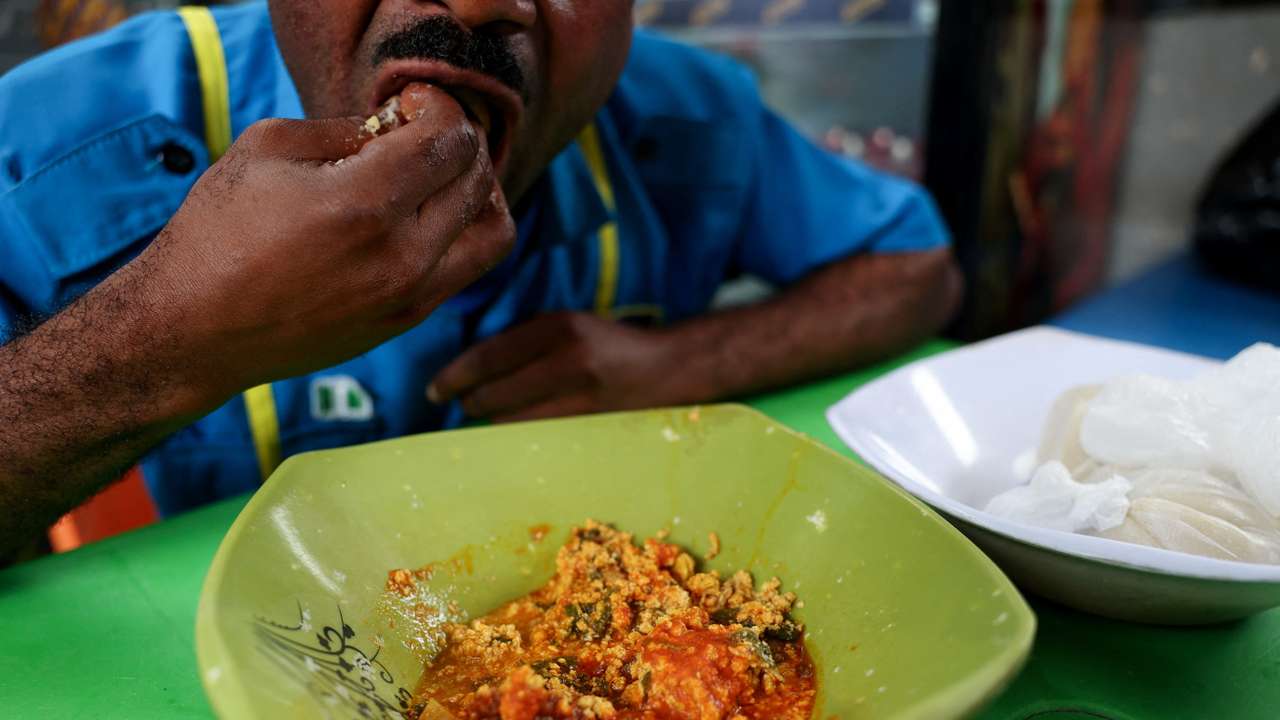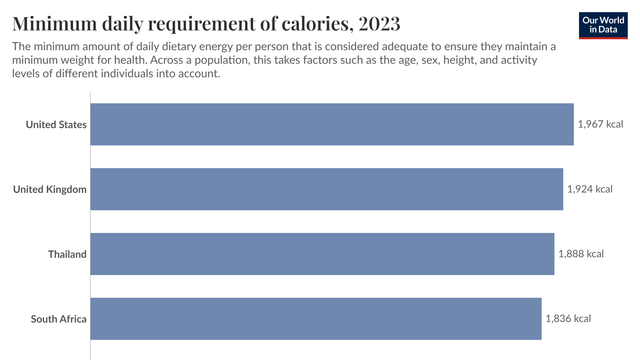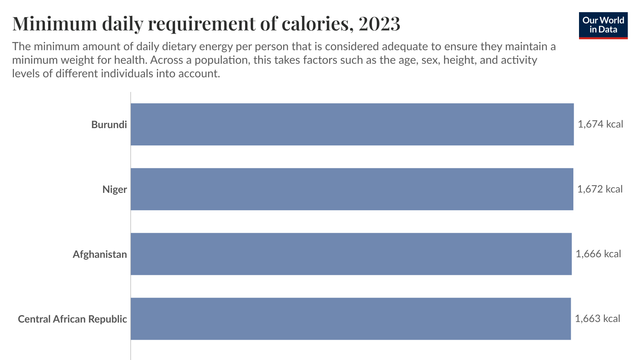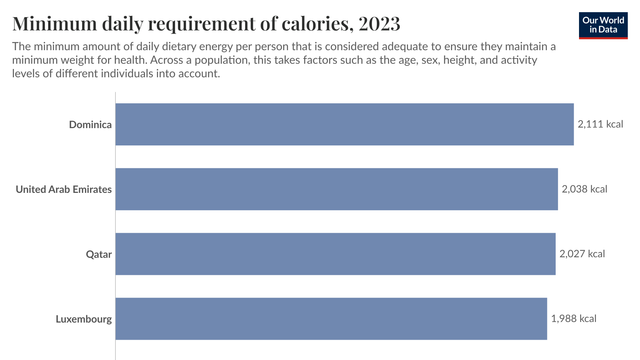How much you need to eat depends on where you live?

What explains the differences and which nations are advised to eat the most?
The United Nations Food and Agriculture Organisation sets recommended minimum levels of calories which individuals should consume in order to avoid falling into malnutrition.It sets a number of kilocalories which the average person needs in their daily diet. But the numbers vary significantly.

What's going on?
The amount each person needs to eat without losing weight will depend on how heavy they are to begin with as well as their height, gender, age and the amount of physical activity they do. Consequently, countries where people are already heavier and taller such as the US and western European nations typically need to each more. Countries where a higher proportion of the population are children, such as in Africa, may have lower requirements on average. However, the UN figures are not a guide for each individual. They are designed for planning at large scale and individuals should calculate their own calorie requirements based on their own circumstances.
Which countries are recommended to eat the least?
The Democratic Republic of Congo, one of the world's poorest countries has the lowest recommended calorie intake, according to the UN. Its total of 1,655 kilocalories a day is equivalent to one meal of a large burger, fries, a soda and a small packet of candy. Other countries at the bottom of the list include the Central African Republic, Niger, Burundi and Afghanistan.

Which countries are recommended to eat the least?
The other end of the table is dominated by more wealthy nations, which have a considerably larger recommended energy intake.

The UAE and Qatar feature highly because their populations include large male workforces. Men tend to need more calories than women and outdoor work also increases the minimum energy required to avoid losing weight, especially in hotter environments. However, top of the table is Dominica, which has a rural economy where workers perform frequent manual labour. Its minimum level of 2,111 kilocalories per day is 466kcal higher than in the DRC, that's equivalent to an extra 100g of milk chocolate.
This story is written and edited by the Global South World team, you can contact us here.